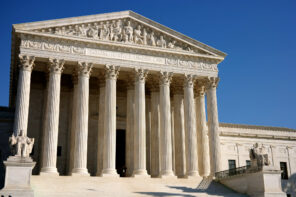In an apparent attempt to hammer in the school’s loyalty to Catholicism, Boston College officials have placed a crucifix in each classroom and Christian artwork around the Jesuit University’s campus.
Some faculty members have complained. Professor Dan Kirschner called the move “insensitive” to people of other faiths. And Professor Maxim Shrayer asserted that that religious imagery is “contrary to the letter and spirit of open intellectual discourse.”
Other faculty are pleased with the new look. Rev. John Paris dismissed the criticism as “narrow and bizarre musings of a few disgruntled folks.”
During Pope Benedict’s visit to the US last spring, he encouraged Catholic educators to reinforce the Catholic identity at their institutions. However, it is doubtful that the pope thought hanging a few crosses would do it.
Regardless, this move by Boston College points to the larger questions of academic freedom or “open intellectual discourse” – as Shrayer put it – on Catholic campuses.
Are Catholic colleges first Catholic and then academic institutions? As academic institutions, are educators obliged provide their students – Catholic and non-Catholic alike – with a well-rounded education which includes myriad perspectives, not only the Catholic perspective? Should students, when they decide to go to a Catholic college, be aware and/or resign themselves to the notion that their education will be distinctly Catholic?
These are questions easily answered by many in the Catholic hierarchy. Yes, Catholic colleges are first Catholic. No, Catholic educators are not obliged to provide their students with different perspectives, especially if they go against church teaching. And yes, students who don’t want a Catholic education should go down the street to a secular school.
However, for students and faculty, these questions – and the answers by the hierarchy – are harder to stomach.
It seems that actions like hanging crucifixes in every classroom or forbidding a prochoice speaker to come on campus are desperate actions by the church hierarchy and administrators at Catholic colleges. They want to cling to this distinctly Catholic identity in order to try to mold students’ minds into this one way of thinking – not trusting students to form their own consciences. They are worried that if they let go of this notion of Catholic or bust – most students would decide that certain teachings are not applicable to their lives or, even worse, leave the faith.
And maybe they are right, but maybe that also would force the church hierarchy to explore and changes practices that are no longer relevant in today’s society.




